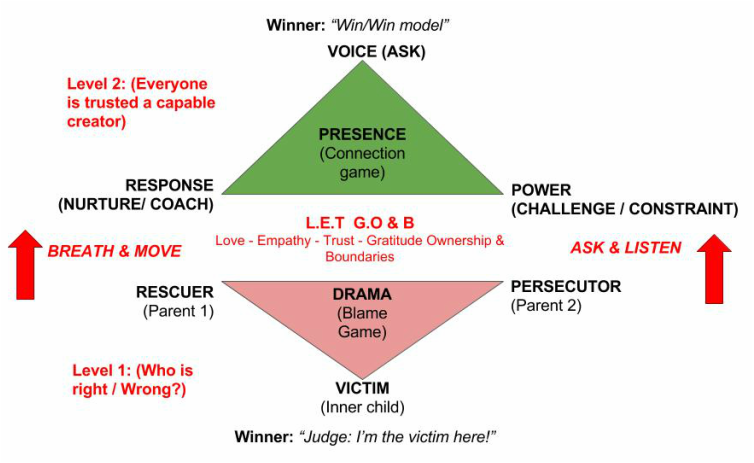
Blaming lack of revenue on company-wide poor performance rubs people off the wrong way and aggravates the problem. In our example, the managers could have communicated the reason for the drop in hikes with more empathy. Many a time, the persecutor’s behavior makes the problem appear larger than it is thereby making the victim believe that he/she is suffering from a major catastrophe when in reality it is only a simple problem.


In cases like these, sometimes a persecutor exists only in people’s perceptions, not in reality. The victims look at the managers as persecutors even though it is hard to pinpoint who’s the villain here. Also, the managers might only be passing a message from the leadership team. They emphasize only the fact that the hikes were lower without taking accountability for their own performance. Compared to our previous years, our performance was subpar across all departments.”Įven if that statement is truthful, employees fail to look at the reality. The managers tell their employees, “The raises this year were lower because we did not deliver enough profits. In our example, the managers are considered villains. They come across as authoritarian and rarely solve the problem or help people. Though persecutors don’t always cause the problem, their tendency to criticize and blame people during a negative situation coupled with a lack of empathy makes them unpleasant to deal with. Persecutors – “It’s your fault” attitudeīlue vector created by vectorjuice – Persecutors are the villains whom victims hold responsible for the problem. Related article: Learned Helplessness – Giving up without trying 2. Therefore, they root for the rescuers and hope that an external entity finds a solution for them. It’s not the laziness that prevents them from solving the problem, but the mindset of helplessness. Victims blame persecutors for their misfortune and hope for a rescuer to show up and save the day. In any difficult situation, the victims believe that they’re on the receiving end of the negative consequences and that solving the problem is beyond their capacity or control. They believe the cause of the situation is an external factor or another person or a group of people. They’re looking for a savior who can help them get better hikes. They believe the managers are useless and that leadership thinks only about profits. In small groups, they whine about the company paying them peanuts despite working long hours.

Woman vector created by stories – In our example, the victims are employees who believe they’re not being paid for what they deserve. Employees had raised questions for the last 3 years that the pay did not meet the market standards, and the numbers for the current year have aggravated the problem. Compared to the previous years, the increase in salaries this time is lesser. Situation: It’s the time of annual salary hikes at the organization BlimZen. I will explain each of them with an example. When you’re caught in the drama triangle, you believe you’re playing one of the 3 roles. The roles in the drama triangle are defined by what people believe and are often restricted to each person’s thoughts. For example, you assume the Government was the persecutor for the spread of Covid-19, whereas a health-conscious citizen will consider a person who steps outdoors as the persecutor while looking at themselves as the victim. You might consider yourself a victim, but another person might look at you as the persecutor. Related article: Your perception is your reality


 0 kommentar(er)
0 kommentar(er)
